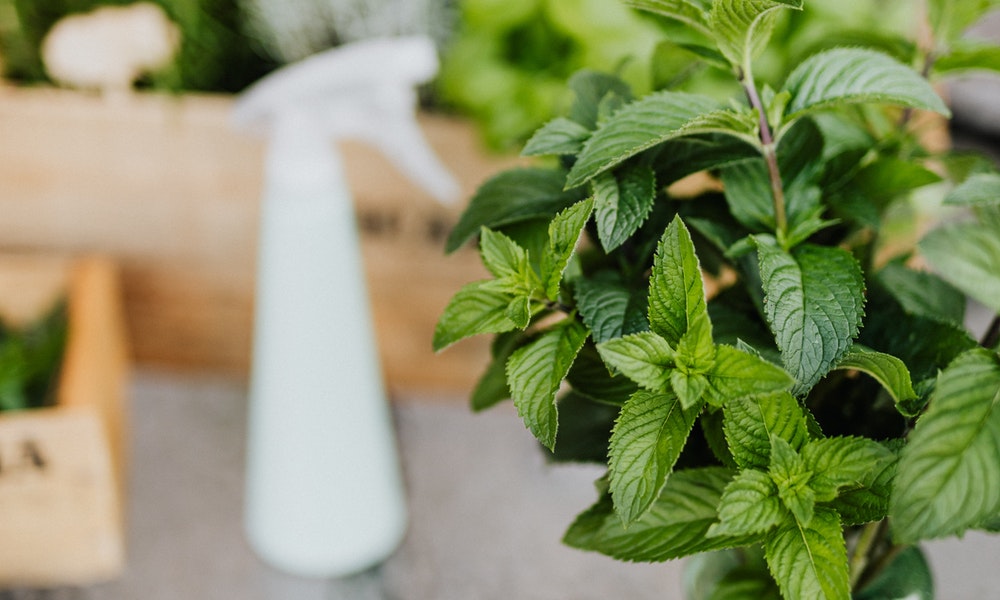Peppermint is a common name. It’s the flavor they use in toothpaste, chewing gum, and other products. It is. But a peppermint plant in your garden can give you so many more benefits. It’s easy to learn how to grow peppermint. But before we dive into the actual plant, let us first look at what it is. Peppermint (Menthax piperita) was first grown in 1750 near London, England. It was originally cultivated as an experimental hybrid of watermint and peppermint. Its adaptability and medicinal properties are evident by the fact that peppermint can be grown almost anywhere in the world.
Pages of Contents
What is Peppermint?
Peppermint, a natural mint mix, can be found wild in Europe, North America and Australia.
This name is derived from, the Latin word Mintha. It’s the Greek name for a nymph, who was transformed into a plant of mint (it’s a complete story). piper means pepper.
Its name, “pepper”, is apt because it has a pungent, spicy flavor that comes from a unique blend of menthol and menthone and menthylcetate as well as limonene, terpenoids, and menthol.
Depending on the growing conditions, peppermint plants can reach three feet in height and two feet in width at maturity. Plants usually reach one- to two feet in height.
The stems are typically smooth and red, but some cultivars can have hairy, green stems. The leaves are oval-shaped with toothed margins and can be hairy.
The plant can produce pretty purple or pink flowers on spikes in the summer.
History
Peppermint’s history is like many mint varieties. It can be grown wild in many places around the globe, so it is not clear how they got there.
Although scientists don’t know where it came from, it is thought to have been created in Europe.
Michael Castleman, author of “The New Healing Herbs” which is available on Amazon explains that spearmint and peppermint were both considered the same plant up until John Ray, an English botanist, distinguished them.
Cultivars
Mentha x Piperita ‘Chocolate Mint” has blooms that open from bottom to top; the flavor is similar to mint chocolate chip ice-cream.
Mentha x Piperita Citrata has a citrusy scent and is often called orange mint.
Mentha x Piperita ‘Crispa’ has a trailing form with bright green, crinkled leaves and tiny pale lavender flowers.

Potting and repotting
Peppermint has a tendency to spread everywhere so it is wise to grow peppermint in pots. A large pot should have adequate drainage holes to allow for vigorous root growth. Proper mulching will ensure that your plant has good drainage and a moist environment. Potted mint can become leggy due to lack of sunlight or excessive fertilizer. To maintain a compact, bushy plant, trim container-grown mint regularly. This will ensure that it is healthy for many years.
Light
Peppermint can be grown in full sunlight or partial shade . Peppermint can tolerate some shade, which is unusual for most herbs.
Soil
Peppermint’s adaptability is one of its greatest assets. However, it can also be a problem because it can grow almost anywhere. Peppermint thrives in rich, loamy soil that is moist. However, it has been known to grow along trailsides and on craggy outcrops – it can and will grow wherever you put it.
Water
You can ensure that your peppermint plants are happy and full of flavor by keeping the soil moist. Be careful not to go overboard. Like most mints peppermint cannot tolerate standing water and soaking soil. Soggy roots can cause severe damage to your plant.
Temperature and humidity
Although peppermint is extremely hardy, it can only withstand light frosts. It cannot withstand prolonged cold snaps in cold environments, USDA Hardiness Zones 5 or below. The ideal conditions for peppermint are between 55 and 70 degrees Fahrenheit. However, it can be grown in a variety of temperatures. Keep the soil moist if temperatures are expected to rise. Also, be aware of excessive growth due to humid conditions.
Fertilizer
Avoid fertilizing any herbs, particularly those belonging to the genus Mentha. The oils found in the flowers and leaves determine the flavor of herbs. The growth of herbs can be accelerated to produce small, profuse amounts with few flowers and leaves, and leggy stems instead of large, rich and concentrated oils-rich flowers and foliage. This is often evident in the difference in taste between homegrown and store-bought herbs.
Propagating Peppermint Plant
Mint is one of the easiest to propagate using cuttings. Cut a four-inch section of stem using sterile scissors. Take the leaves from below the node, and then submerge the cutting in distilled waters. Place it in bright light with good air circulation.
Growing from seeds
The peppermint seeds should be pressed on to the seed starter mix. You will need to be gentle with the seeds. The seeds do not need to be buried with soil. The soil should be kept moist. Germination will take place in 5-10 days if it is heated with a heat pad. When you’re ready to transplant seedslings or direct sow into your garden, wait until frost has passed. Place the peppermint seedlings at 18-24 inches spacing.


